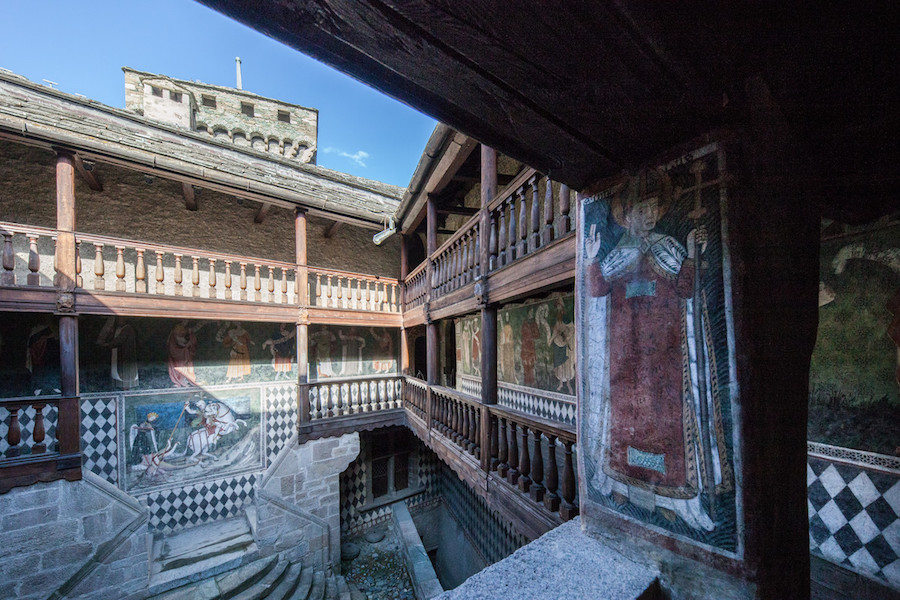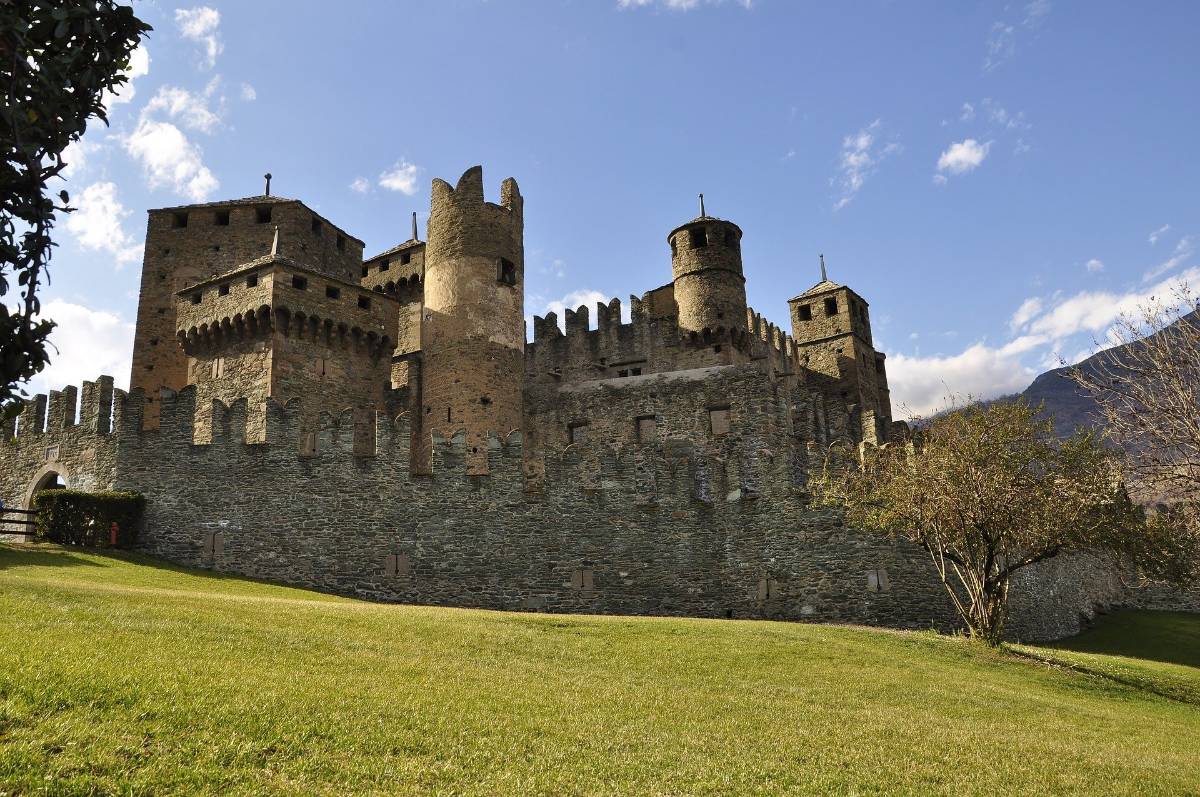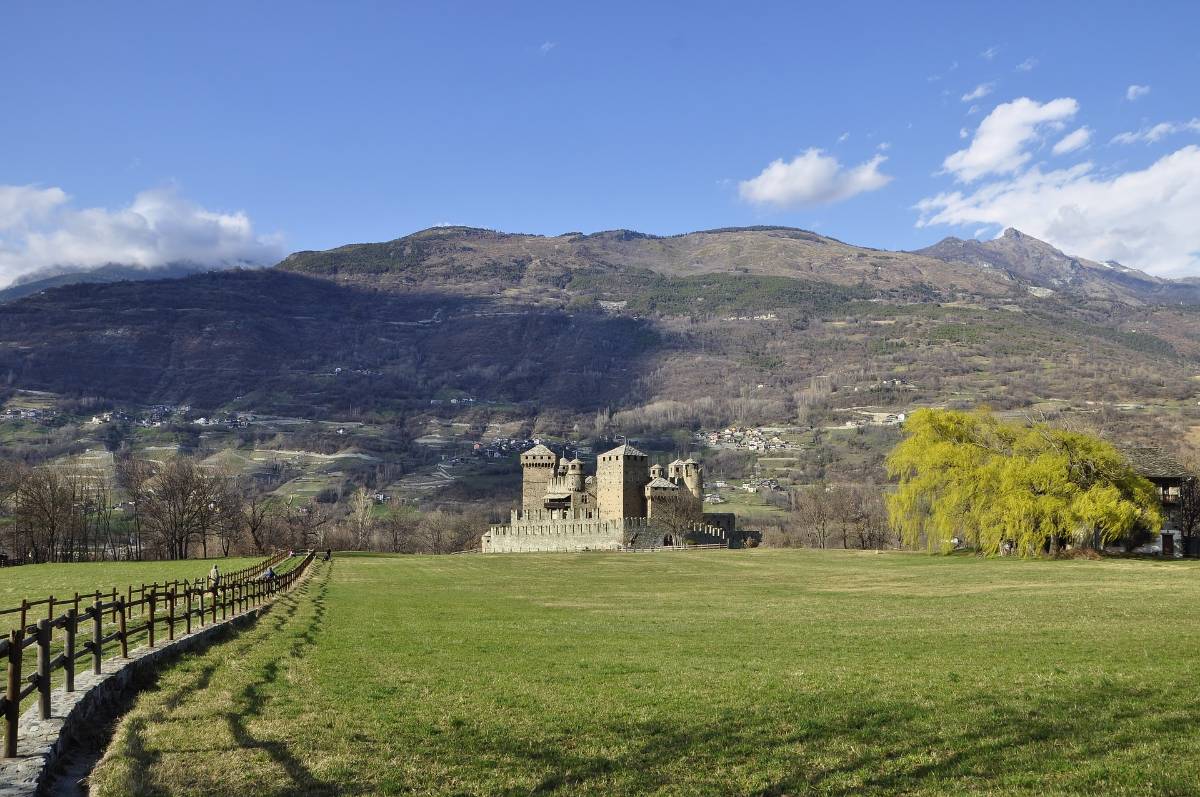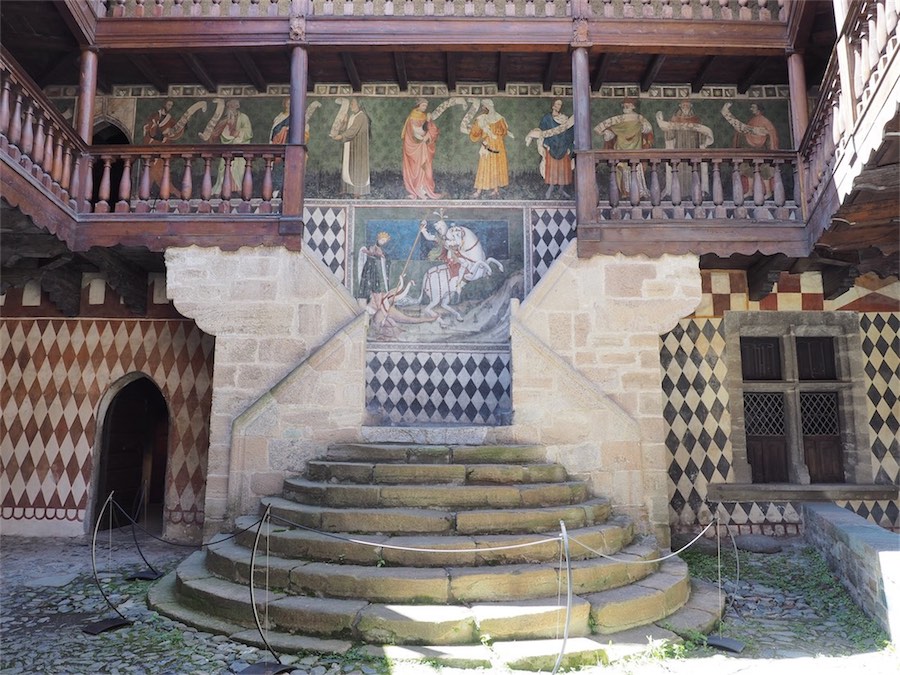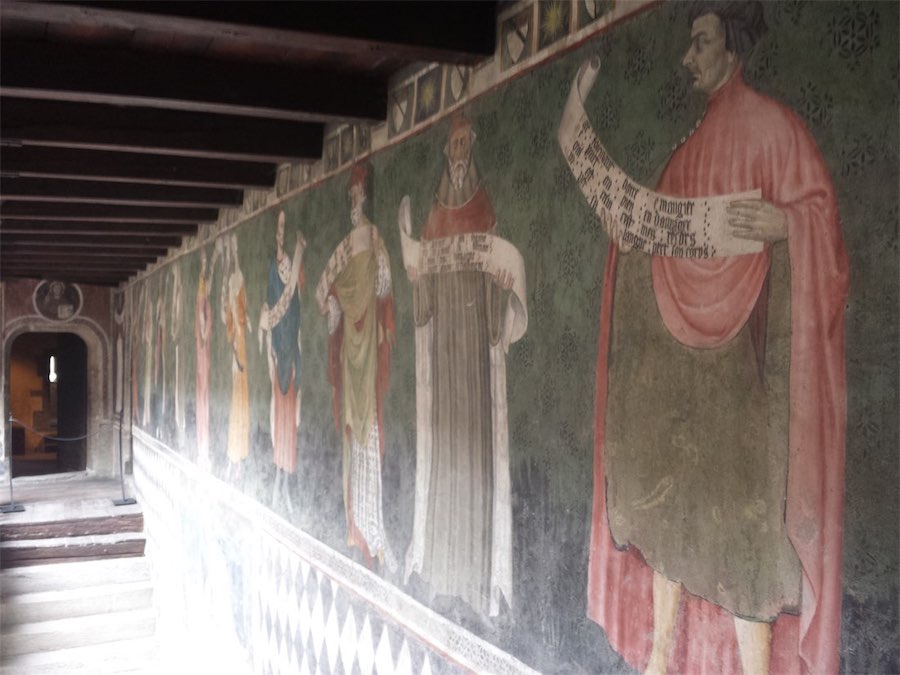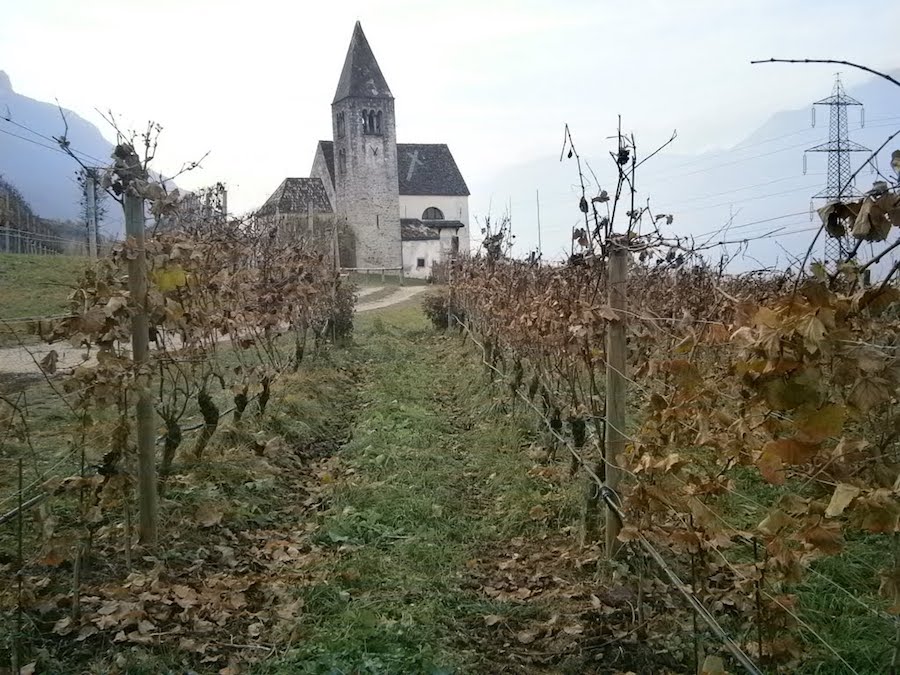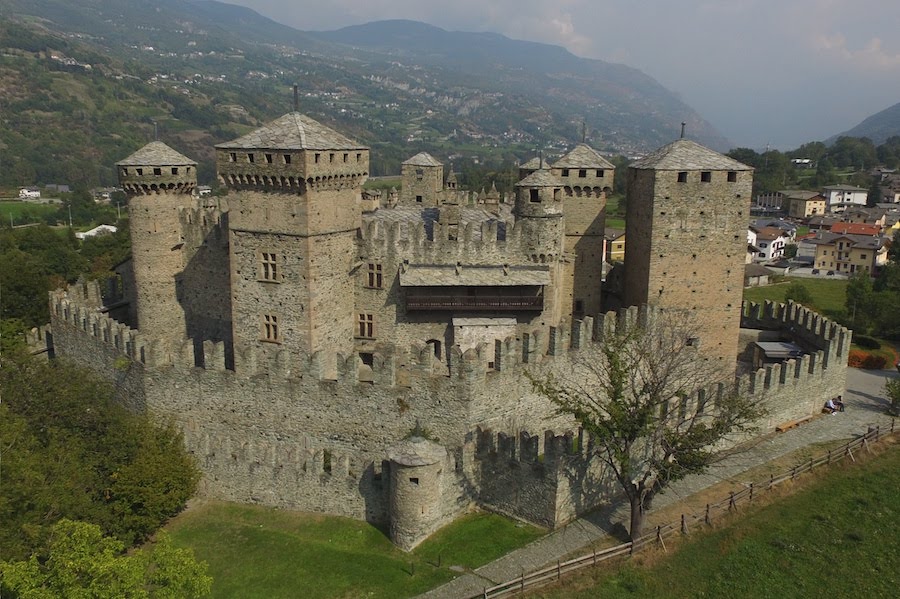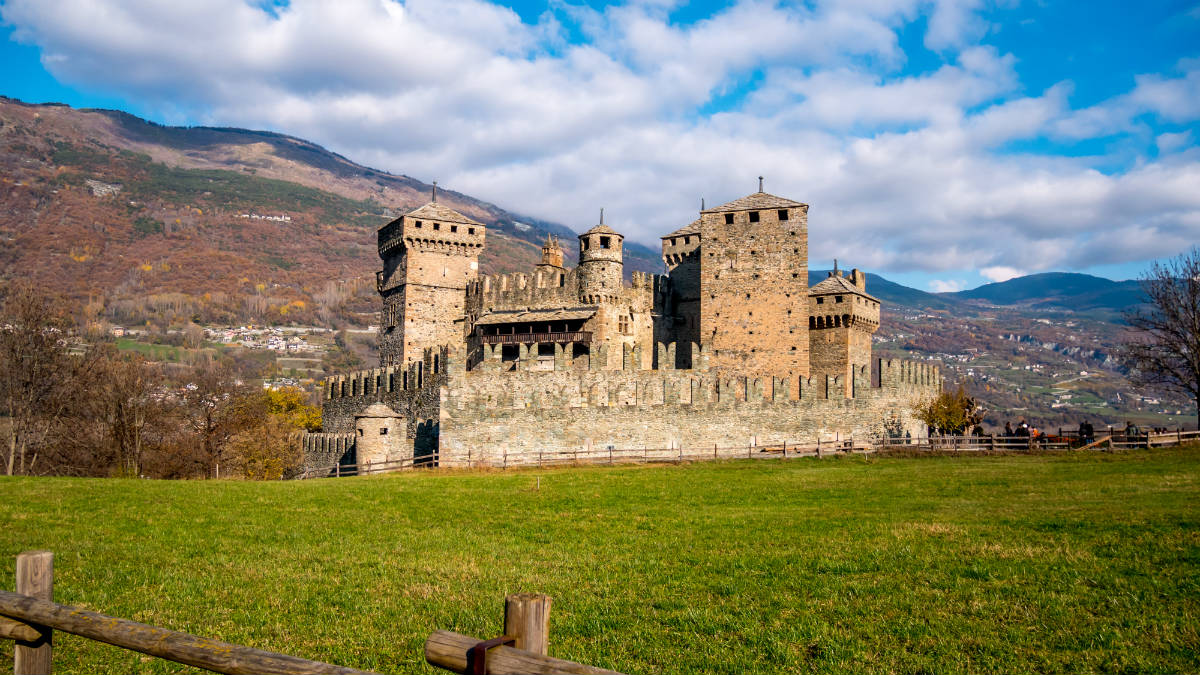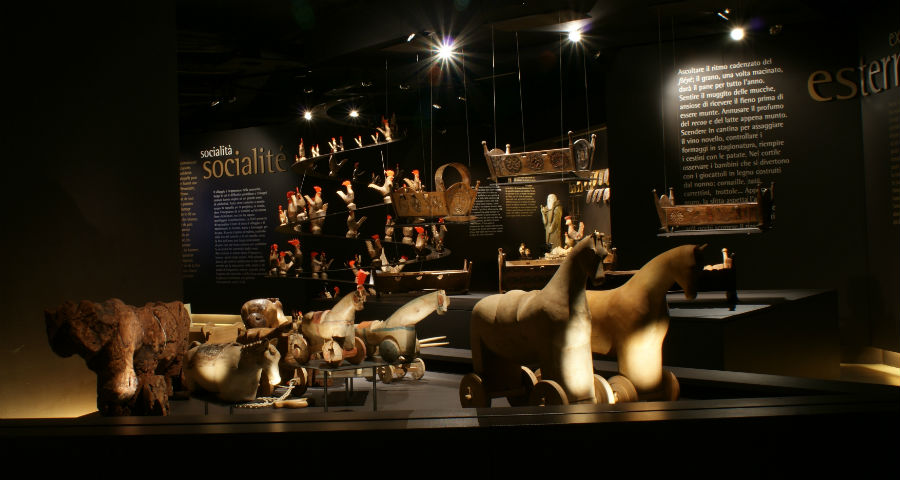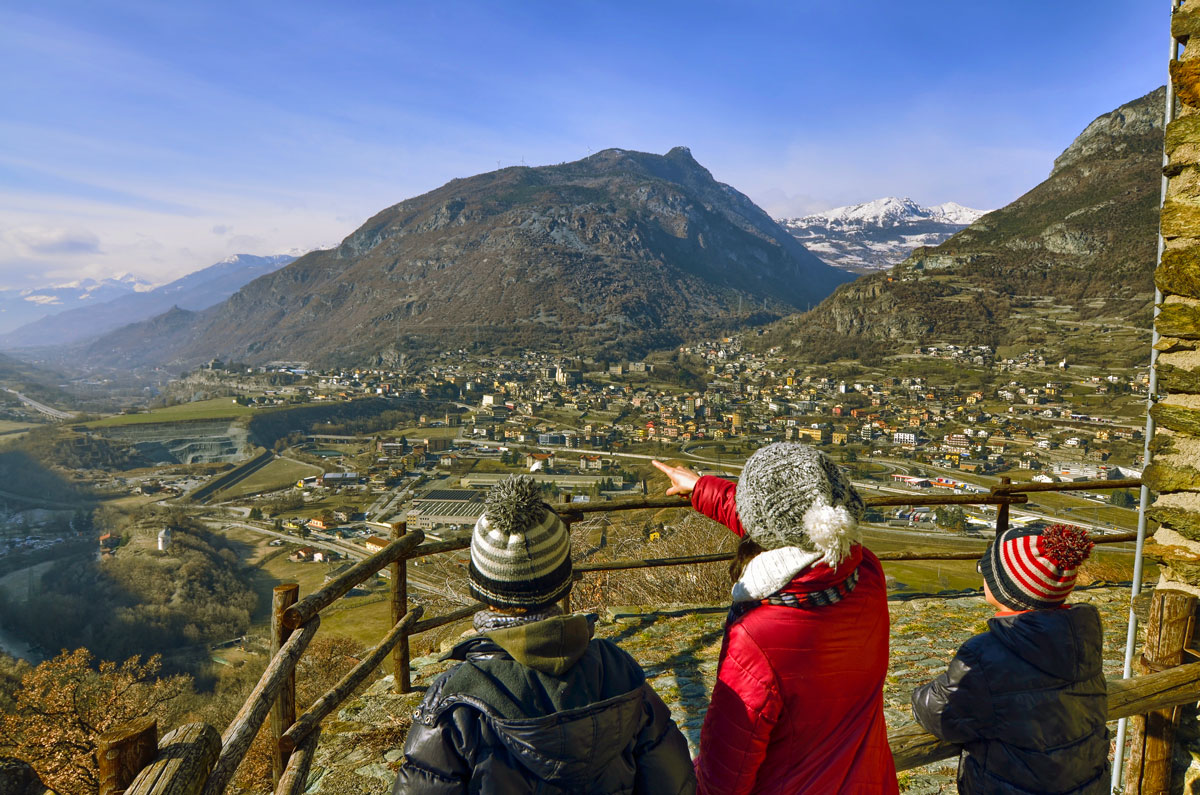The history of Fénis binds always with that of the lineage of Challant, who ordered the construction of the Castle, today among the symbols of the Aosta Valley. On the model of Fénis, in 1884 was built the castle of the medieval village of Valentino in Turin. During the Second World War, the territory of Val Clavalité and Fénis were the headquarters of the Brigate Partigiane guided by Emile Lexert (1911-1944).
The main attraction is its castle, an Italian national monument considered among the most representative symbols of the Middle Ages in the Valley of Aosta You also retain some caseforti and ancient dwellings.
In Fénis is also the seat of the Museum of the Valdostane handicrafts tradition (MAV), which gathers the best examples of craft activities traditional in the region. The Museum exhibits about 700 objects that shed light on the evolution of the Valdostane handicrafts, from ancient times to the craftsmanship of our days.
In Fénis there are well 13 different locations which are between 520 m and 620 m of altitude, except Les Crêtes, at the lowest level, and Chénoz, Tsan Plan and the Cerise at a higher level. In the past there were small groups of houses - Molinaz, Pareynaz, Chez Cuignon, Chez Fontillon, Rovarey and Ramolivaz - which were subsequently joined to the fractions larger. Have been recently installed signs in wood with the old names in order to preserve the memory.
Fénis, as most countries Valdostans, had a population which is predominantly peasant until the middle of the last century. The peasants were not a specialized work, but had to carry out various activities during the year, according to the natural cycle of the seasons. The totality of the population owned animals: sheep, goats, hens to have eggs throughout the year and of fresh meat in the summer period. Sometimes the cattle were taken in use by the operators of the alpine pastures only for the winter period.
In the village there were several turnarie dairies where the members wore the surplus milk to transform it into a Fontina, Toma cheese and butter. They were called so because, in turn, each state withdrew the products on the basis of the quantity of milk conferred.
In the summer period the peasants were dedicated to the collection of the forage to feed animals in winter. The grass was cut with a sickle that, to be effective, had to be beaten every day and ground often with an abrasive stone. The hay crop in bundles (balon), was transported on the back up to the barns, usually close to the stable. Another very demanding work was the harvest of cereals, the subsequent threshing and stowage of straw utilile a to obtain the couches for people, for the baby calves just born, etc.
In autumn all were engaged in the harvest and in the collection of fruits such as pears, apples, chestnuts, walnuts, etc. The potatoes, almost always sown to the mountainside, were dissotterrate with a hoe: a part was stored on the spot in suitable holes (crot of tartifle) for sowing the following year and the remainder was transported downstream for food use.
All families used to slaughter their animals based on their needs and consistent with its economic possibilities. According to the tradition, the slaughter had beginning from the day of Santa Barbara (4 December) as the temperatures were already fairly rigid and stable so as not to compromise the product. The absence of refrigerators and freezers imposed conservation methods such as drying and salting.
In the winter period, women were the usual working with wool produced from their sheep and then provide hot links, muffles, socks, etc. Often families gathered to make in the company some jobs such as shelling beans, remove the leaves from the ears of corn for then have them dry in the attics, peel the nuts to bring in suitable crushers to produce oil.
An important source of income was constituted by the activity of Lumberjack. The work was carried out with the strength of their arms and legs: trees - mostly firs and larches - were slaughtered, pruned and transported downstream by sliding them on the snow. The wood was then largely sold to local dealers that the transported with carts pulled by mules to the nearest railway station to export them in other Italian regions.


